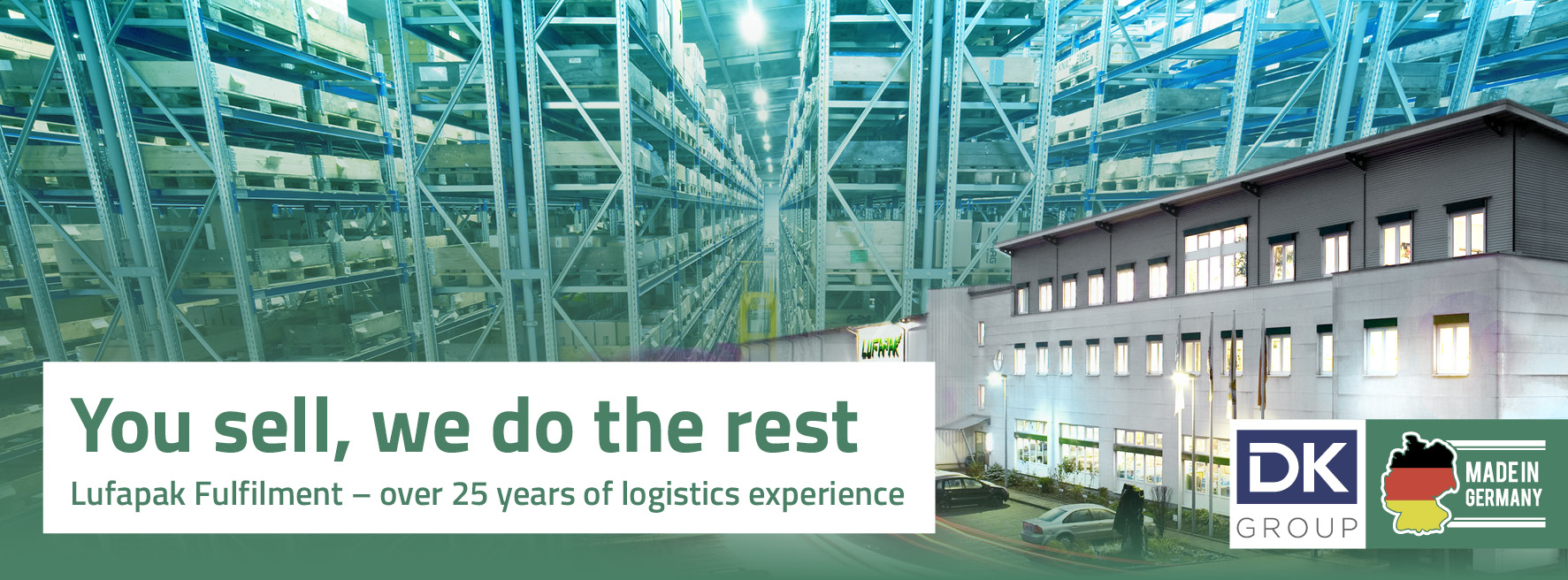sales@lufapak.de +49 2631/384-0 Contactform
Just In Time Logistics Definition – What does Just In Time Logistics mean?
Just in time logistics refers to a shipping method in which the required goods are delivered on time and in exact quantities in order to minimize warehousing at the processing location. The crucial difference to just-in-time production is that the supplier does not have to pay attention to the correct sequence when packing the goods; in just-in-time production, the “process principle” is applied to the purchasing plan. The flow principle states that all materials should be in a constant flow. A good shipping plan enables the form of procurement logistics applied here. The task of the dispatch planning is to keep the dispatch and storage costs as small as possible. By determining the optimal delivery size and calculating the correct cycle length, these costs can be reduced.
Electronic data exchange between customers and suppliers is essential to ensure smooth and just-in-time procurement. Required material quantities are delivered to the assembly line only when needed. Stock quantities are therefore only created directly on the assembly line. Logistics plays a key role in the operating concept, which is based on just-in-time processes. Interactions between suppliers, producers and end customers only function efficiently and smoothly if specific logistical requirements are met. Two aspects that must be taken into account are thus the optimal distribution of goods in the warehouse according to individual goods turnover and the use of automated systems such as tote conveyor systems to minimize operator movements. Just In Time logistics is not suitable for all companies. One industry where Just In Time is particularly useful is high-volume manufacturing. Just In Time processes are used primarily in the automotive and aerospace industries. In today’s automotive industry, about one-third of all components are delivered just in time. Computer and consumer electronics manufacturers have also successfully used Just In Time methods.
Just In Time delivery advantages
Among the most important benefits of Just In Time logistics are savings in warehousing (storage space, organization, personnel). Another related benefit is that there is less inventory management risk because the inventory is clear. In addition, the flexibility of Just In Time Logistics allows companies to respond quickly to unforeseen market changes. Other business goals of Just In Time logistics include increasing flexibility, improving service to customers, increasing liquidity, reducing risk, and increasing productivity. Just In Time logistics means that a company’s suppliers must ensure that goods reach the customer on time. To be able to achieve this goal, the parties agree in advance on a certain lead time, which is given to the supplier after the customer has placed the order.
Just-in-time procurement enables companies to reduce production costs. Before the just-in-time process can be used successfully, a number of framework conditions must first be created – and this is the only way to keep costs as low as possible. Storage is largely shifted to transport routes – a good infrastructure is an essential prerequisite – and the reduction of lead times depends largely on this. The supplier’s location is usually not close to the production site – so the goods have to be transported from A to B. This is a major factor in reducing lead times. Another prerequisite for just-in-time success, just as important as infrastructure, is cooperation between manufacturing companies and suppliers. It is defined by two other factors: Information flow and supplier flexibility. Collaboration with flexible suppliers is important. This is the only way to ensure that information flows smoothly and that the required parts arrive in production on time. Another requirement relates to the turnover rate. The demand for individual parts should last as long as possible. Last but not least, the delivered product must be of a certain quality so that it can be further processed without further ado.
Just In Time procedure Advantages Disadvantages
The downside of Just In Time procurement is, on the one hand, the increased communication effort. Communication between customers and suppliers always requires the exchange of protocols on the current production situation. Otherwise, delivery of the wrong part can lead to lengthy rework and delivery delays. On the other hand, environmental influences such as snow and storm damage as well as traffic disruptions jeopardize smooth production. Complications along the way, such as accidents or detours, can mean that supplies do not reach production on time, resulting in production downtime. A clear disadvantage to just-in-sequence is that it does not completely eliminate warehousing.

Just in Time logistics is now understood as specific behavioral principles in industry that are part of the Lean Management philosophy. The Just In Time process is intended to minimize expensive warehousing costs and shorten changeover and lead times. Each company must decide for itself whether the use of Just In Time warehouses makes sense. It must be checked whether the necessary framework conditions are in place. The introduction of a Just In Time approach requires organizational changes in all areas of the supply chain.
Contact us now and get advice


